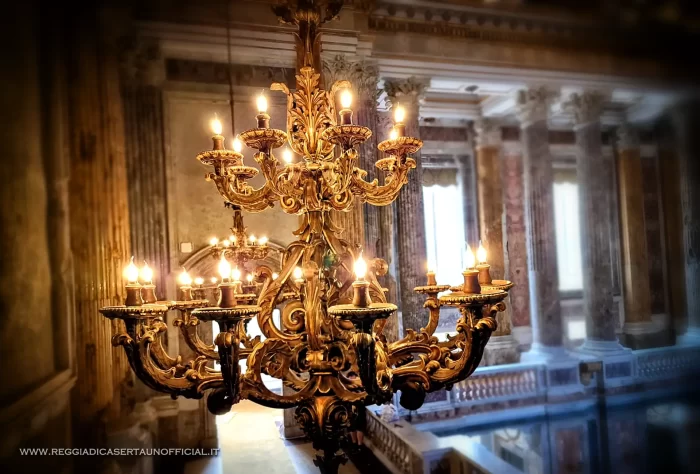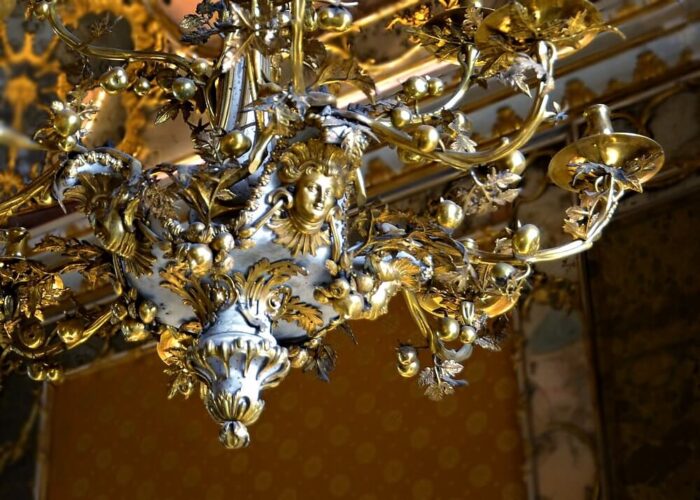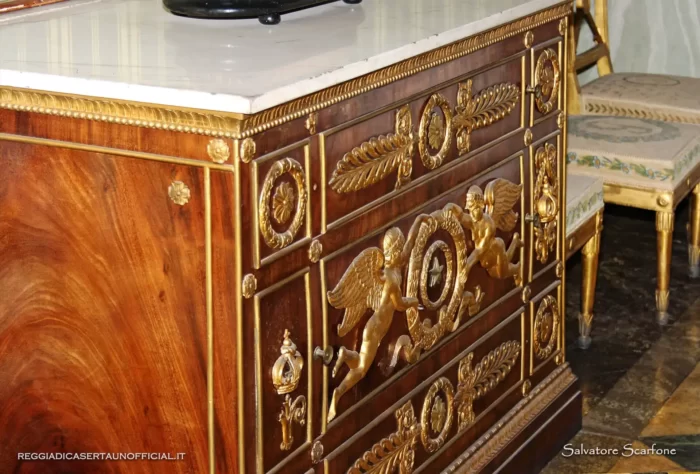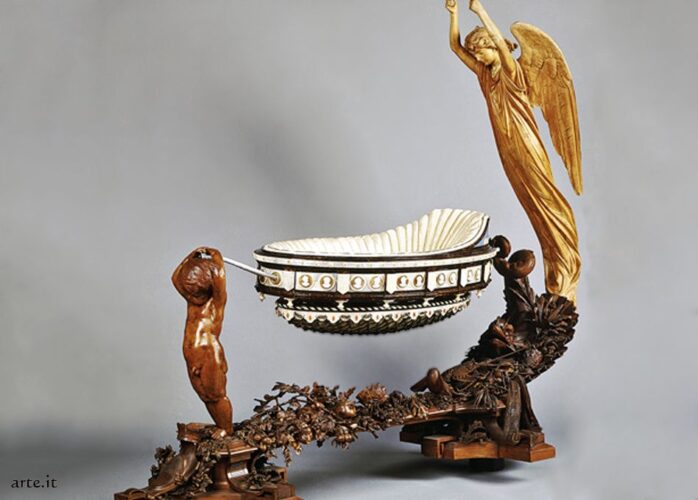Introduction to the styles of Decorative Arts
The elements of decorative arts from the Baroque to the Victorian era
Learn to recognize the decorative arts, style and age of a piece of furniture or an ornament, simply by observing the style and symbols used in the decoration.
BAROQUE / LOUIS Xiv - (1600? -1720?)
Chandelier of the Palatine Chapel
Origins and development
Born in Rome to represent the power and wealth of the Vatican State, it flourished at the court of Louis XIV in Versailles, and later spread to the Netherlands and Great Britain thanks to the Huguenot craftsmen after the revocation of the Edict of Nantes (1685
Features
Heavy, formal, symmetrical, majestic and showy appearance, with sculptural and rounded shapes. Rich in elaborate carvings and stuccoes, it is often richly decorated with gold leaf and precious materials.
Symbols
Asymmetry, flowers and natural symbols, scrolls in the shape of letters C and S, curved cabriole legs, shells, rocaille, scrolls, simplified grotesques, chinoiserie, singerie (decorations with monkeys), Corinthian), geometric and architectural inlays.
Main Artists
Andrea Brustolon; Andre-Charles Boulle; Daniel Marot.
ROCOCÒ / Louis XV - (1700? -1770?)
Origins and development
Born in France as a reaction to the Baroque formality, it also developed thanks to the requests of the female clientele. Thus, new furnishings were born, such as, for example, sofas to meet the new need for comfort and informality in furnishings. This style soon spread throughout Europe and also in North America.
Features
The final period of the Baroque, compared to the latter, is light, relaxed and informal, favoring the convenience of use over pure theatricality. Extensive use of rural scenes; curved shapes; asymmetry; pastel colours; light colored woods, decorative patterns, light gilding.
Symbols
Asymmetry, flowers and natural symbols, scrolls in the shape of letters C and S, curved cabriole legs, shells, rocaille, scrolls, simplified grotesques, chinoiserie, singerie (decorations with monkeys), Corinthian), geometric and architectural inlays.
Main Artists
Jean Berain I, J. A. Meissonnier, Nicholas Pineau, Pietro Piffetti, T. Chippendale.
NEOCLASSIC / Louis XVI - (1770? -1804?)
Origins and development
Born as a reaction to the excessive decoration of the Rococo, and influenced by the Enlightenment rationality. Born due to the interest in the classical Greco-Roman era which originated the Grand Tour, and which increased after the excavations of Herculaneum (1738) and Pompeii (1748). This style is also called: Louis XVI, Federal (North America), Etruscan, Regency and Empire.
Features
Rational and symmetrical shapes reminiscent of the classical Greco-Roman era, and with gilded edges.
Symbols
Vases, urns, Greek keys, arabesques, palmettes, garlands, bundles, trophies, griffins, anthemio, sphinxes, laurel wreaths, classical architectural orders (Doric, Ionic and Corinthian), geometric and architectural inlays.
Main Artists
Robert Adam, G.B. Piranesi, Giuseppe Maggiolini, Adam Weisweiler, Giuseppe Valadier.
EMPIRE (LATE NEOCLASSIC) - (1804-1840)
Origins and development
Created by architects Percier and Fontaine, it has an essential but impactful appearance, and has elements inspired by ancient Rome and Egypt to enhance Napoleon’s victories.
Features
Final period of the neoclassical, it presents rigorously classical rectilinear shapes, and military symbols of ancient Rome. The inlay is reduced to enhance the grain of the wood (use of mahogany) and the decoration is often applied and consists of gilded bronze.
Symbols
Acanthus leaves, arabesque, animal masks, uprights, dolphins, palmettes, winged lions, eagles; Egyptian symbols; Napoleon’s emblems (bees and letter N), swans (Giuseppina’s emblem).
Main Artists
Percier and Fontaine, Jacob-Desmalter, P. P. Thomire.
VICTORIAN REVIVAL - (1840-1900)
Origins and development
It takes its name from Queen Victoria. The London Universal Exposition of 1851 and subsequent ones made the interest in historical styles fashionable throughout Europe and North America. The increase in the wealth of the middle class increased consumerism and the demand for low-cost mass products.
Features
Revival of all previous styles from the Gothic to the Empire. Initially, the styles were respected, then they were mixed, also emphasizing the decorations and appearance. Industrial and mass production, use of new materials, machining and molding.
Symbols
Revival, motifs and elements from different eras, often used together (eclecticism). Furniture with porcelain; capitonnè padding.
Main Artists
Michael Thonet.
EXTERNAL LINKS




